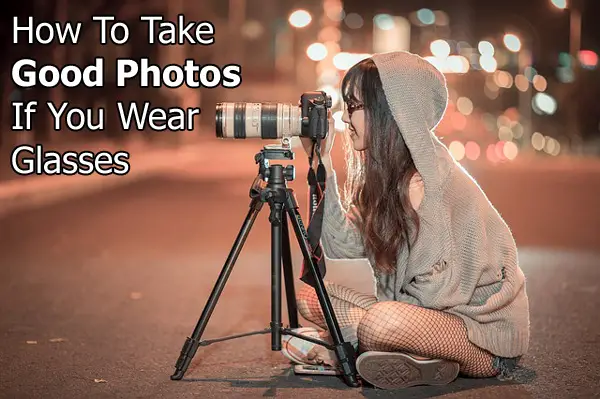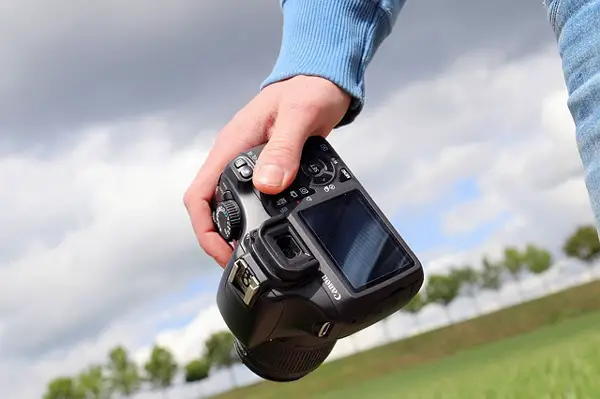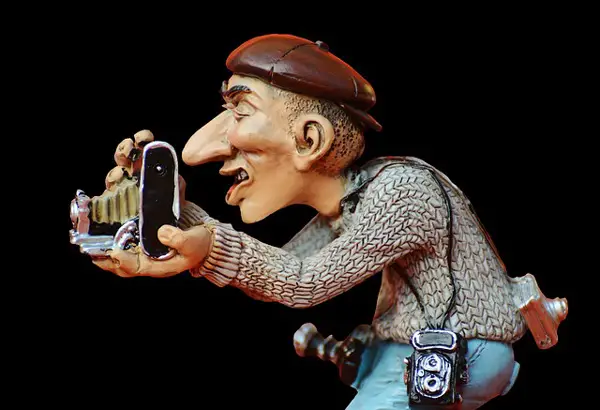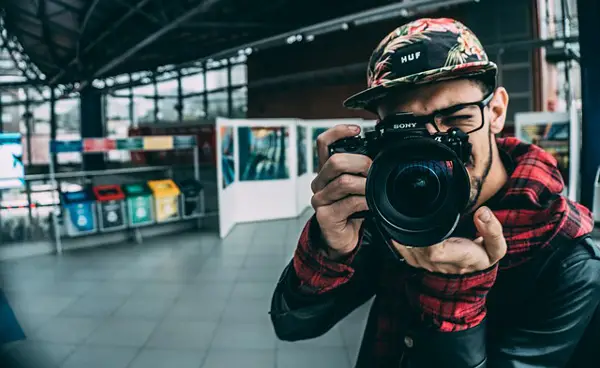Taking beautiful photos should not be a problem for those who wear eyeglasses. When you take pictures, it’s obvious that the photographer gets as close as possible to the viewfinder to get the best view as possible. However, people with eyeglasses have a problem in doing so.

If you are using eyeglasses, this problem can be solved if you follow a series of instructions.
Whether it’s photos with a reflex camera or similar, the eyeglass user has to face a difficult decision.
Do I take pictures with or without glasses?
If you take pictures with a simple camera or smartphone, there’s no problem with this, just look at the screen and press the button.
However, modern DSLR or EVIL cameras allow you to take pictures with and without glasses.
Corrective lens cameras
In a DSLR camera, the viewfinder diopter can be adjusted appropriately to the photographer’s eyesight. In this case, about 90% of all users can do very well without their glasses.
However, there are people with a higher prescription (more than 4 diopters).
In this case, it ‘s recommended to buy a corrective lens, which will fit the viewfinder and allow the photographer to see clearly through it, without the need to use glasses.
Similarly, there are many DSLR cameras that incorporate a feature called LiveView: the camera’s LCD screen shows directly what the digital sensor sees and how the photograph will be saved when the shutter release button is pressed.
 Image courtesy of Pixabay
Image courtesy of Pixabay
However, we must ensure that the image is centered. Only in this way can you be sure that the photo will come out perfect.
The vast majority of compact and mirrorless cameras (EVIL) have only this type of screens to focus on the object.
But this can sometimes be a big problem, for example, in bright sunlight conditions.
In this case, these screens have disadvantages compared to the viewfinder, as you may not see the details well and end up taking pictures of poor quality.
The photographer who wears glasses and uses a viewfinder will enjoy a clear, glare-free vision through the lenses.
People with presbyopia, contrary to popular belief, have a slight advantage when taking photos without glasses. With this visual defect, you can’t properly see near objects, for example you need to move your mobile phone as far away as possible to see text messages.
 Image courtesy of Pixabay
Image courtesy of Pixabay
But when it comes to looking through a viewfinder of a camera, there is no problem because the refractive power of the viewfinder calibrates it, so that objects placed at a distance of one meter remain in focus.
The photographer will be able to see with sharpness and the quality of the photos will depend only on his/her photographic skills.
If you’re a person who prefers to take pictures with glasses, you’ll need to take your time to get used to it.
Prescription lenses can become an obstacle when it comes to looking through the viewfinder. The eye will not be able to get very close to it, so the field of view may be slightly restricted.
The central zones will appear focused, while the peripheral ones can be blurred. In this case, you can buy a special prism available in specialized photo stores. This prism provides a clear view, even in the peripheral area.
Users of varifocal glasses will need even more practice. The first thing will be to identify the area of the glasses through which you can see best when shooting. At this point, it is highly advisable to go to an optician, if you buy new glasses and plan to use them often for your shooting.
You need to explain the problem and bring your camera so that the optometrist can make the necessary adjustments.
What kind of lenses and treatments?
If you often find yourself shooting with glasses, you have to bear in mind that lenses suffer when they come into contact with the viewfinder.
If the lenses are organic, it is possible that over time they may appear scratched, despite the use of hardening treatments. That’s why there are camera manufacturers that offer eyepiece shells made of a particularly soft rubber. If you wear your glasses you should consider buying this type of protective shell and your glasses will be safer. Even though organic lenses are improving over the years, they will continue to suffer from this type of problem.
 Image courtesy of Pixabay
Image courtesy of Pixabay
If you find yourself taking a lot of photos with glasses there is another option.
You can have a second pair of mineral lenses, these are lifetime lenses that break if they fall, but they are much more scratch-resistant.
Ask your optician for more information.
For more on mirrorless cameras, check out this article.









I love photography too much. This post is really helpful for better photo shoot.
Thanks for sharing your post.